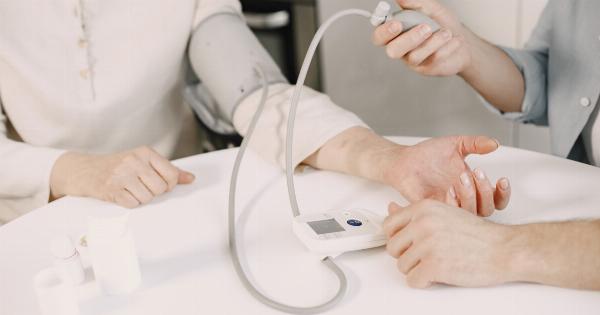Monitoring your blood pressure regularly is an essential aspect of maintaining a healthy lifestyle. High blood pressure, also known as hypertension, can lead to serious health complications if not controlled.
To ensure accurate measurements, it is important to understand the correct technique for taking your blood pressure. In this article, we will guide you through the necessary steps to obtain an accurate reading.
Why Is It Important to Take Accurate Blood Pressure Readings?
Accurate blood pressure readings provide valuable information about your cardiovascular health. Doctors use these measurements to determine if you have hypertension or if your current treatment plan is effective.
Inaccurate readings may result in misdiagnosis or inadequate treatment, leading to potential health risks.
Preparation for Blood Pressure Measurement
Before measuring your blood pressure, it is important to prepare properly for an accurate reading. Follow these steps to ensure reliable results:.
1. Rest and Relax
Take a few minutes to rest and relax before measuring your blood pressure. Avoid physical activity, caffeine, and smoking for at least 30 minutes prior to the measurement.
Find a calm and quiet environment to promote relaxation, as stress can temporarily elevate blood pressure.
2. Choose the Right Time
Try to measure your blood pressure at the same time every day to establish a consistent routine. This helps doctors to determine trends and make necessary adjustments to your treatment plan if needed.
3. Empty Your Bladder
A full bladder can increase blood pressure temporarily, affecting the accuracy of the measurement. Remember to empty your bladder before taking your blood pressure to obtain more reliable results.
Steps for Measuring Blood Pressure
Now that you have prepared adequately, follow these steps to correctly measure your blood pressure:.
1. Choose the Right Equipment
Invest in a reliable blood pressure monitor to ensure accurate readings. Automatic monitors with an adjustable cuff that fits comfortably around your upper arm are usually the most convenient and accurate for home use.
2. Sit in a Comfortable Position
Sit in a comfortable chair with your back supported and feet flat on the floor. Avoid crossing your legs, as it can interfere with blood flow and affect the reading.
3. Position the Cuff
Place the cuff around your upper arm, ensuring it aligns with your heart level. The cuff should fit snugly but not too tight. Follow the manufacturer’s instructions to ensure proper placement.
4. Rest Your Arm
Rest your arm on a flat surface, such as a table or armrest, with your palm facing up. The cuff and the device should be at the same level as your heart to obtain accurate readings.
5. Take Multiple Readings
Most blood pressure monitors allow you to take multiple readings to ensure accuracy. Take two or three readings with a gap of one to two minutes between each to account for any variations.
6. Record the Results
Record the systolic and diastolic blood pressure readings as well as the pulse rate. Keeping a log of your measurements helps you and your healthcare provider track changes over time and make informed decisions regarding your treatment plan.
Tips for Accurate Blood Pressure Measurement
Here are some additional tips to enhance the accuracy of your blood pressure readings:.
1. Avoid Talking
Talking during the measurement can impact the accuracy of the reading. Stay quiet and still throughout the measurement process.
2. Don’t Cross Your Legs
As mentioned earlier, crossing your legs can interfere with blood flow. Keep both feet flat on the floor and uncrossed.
3. Stay Still
Avoid unnecessary movement or fidgeting during the measurement. Keep your arm relaxed and still on the flat surface.
4. Take Measurements at Rest
Measure your blood pressure when you are at rest, rather than immediately after physical activity or exertion. Exercising or being stressed can temporarily raise your blood pressure and lead to inaccurate readings.
Conclusion
Taking your blood pressure correctly is vital for maintaining a healthy lifestyle and effectively managing hypertension. By following the provided guidelines, you can ensure accurate readings and gain valuable insights into your cardiovascular health.
Seek medical advice if you have any concerns or abnormal readings, as your healthcare provider can best interpret the results and provide suitable recommendations.






























